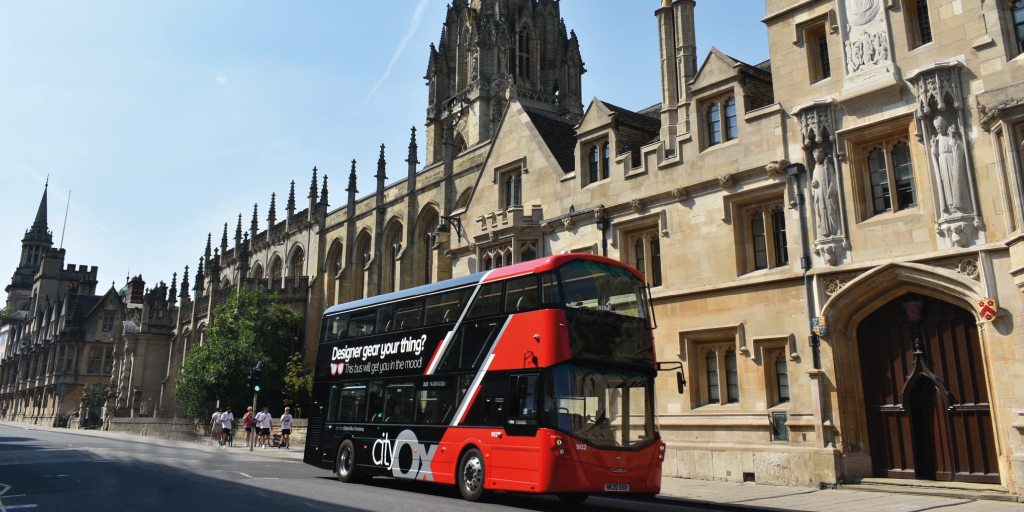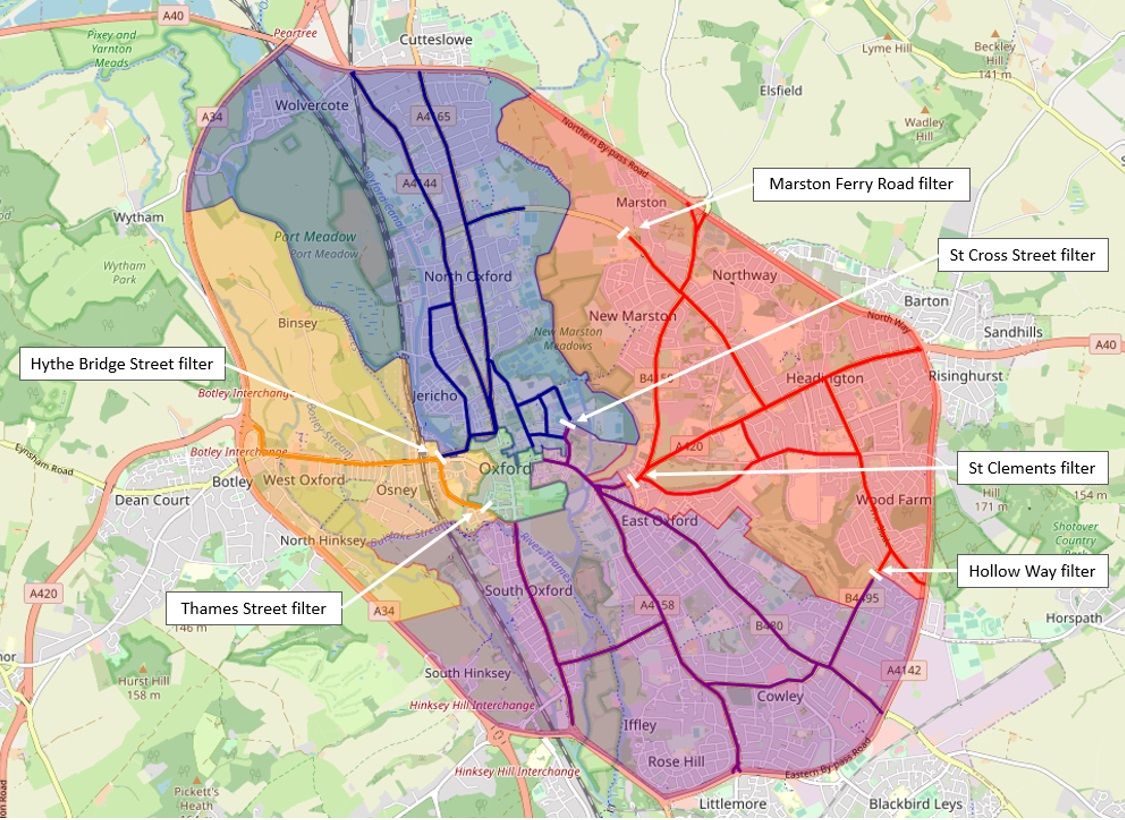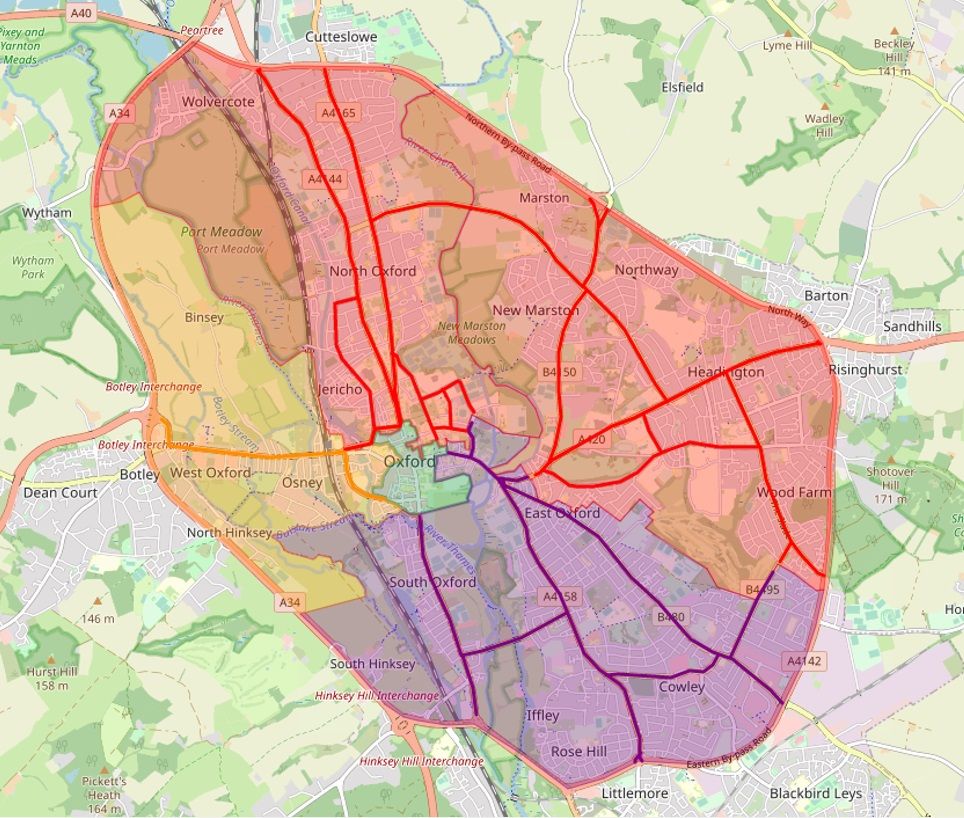Oxford traffic filters proposal: find out more
The consultation on the proposed Oxford traffic filters closes this Thursday, 13 October. If you didn’t catch Oxfordshire County Council’s online Q&A event on the proposed scheme last week, you can watch a recording here.
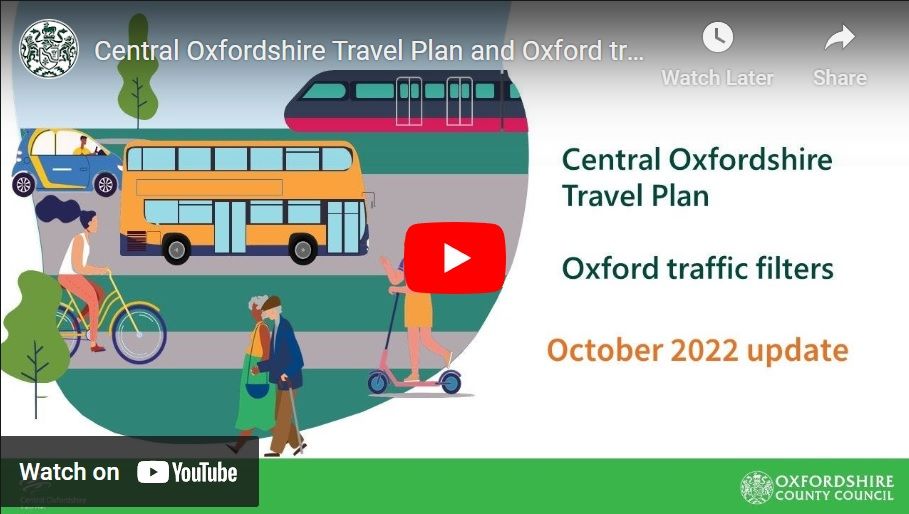
The online event is well worth a watch if you still have unanswered questions about the traffic filters proposals, as it addresses many of the key points that have been raised.
In particular, the Council officers working on the proposed scheme answer questions on the two ‘outer’ traffic filters, namely Hollow Way and Marston Ferry Road, and explain why they are essential to the scheme from a network perspective. If you wish to skip to the appropriate place in the recording (see below), this section starts at around 45 minutes in.
Effect on traffic in Headington
If the traffic filters trial goes ahead, motor vehicles accessing Headington from the ring road will be able to enter via Horspath Driftway, London Road or Marsh Lane.
The Marston Ferry Road traffic filter is (anecdotally, at least) the most strongly-opposed filter, but also the most important for improving the traffic situation in Headington. Headington needs the Marston Ferry Road filter; the wider implications of removing it are discussed in our post ‘Beware the ‘North-East high-traffic superblock’: why Headington needs a traffic filter on Marston Ferry Road’.
Without that filter, in addition to significant destination traffic to its hospitals and university, Headington will also continue to take the burden of private motor traffic headed to Summertown, Jericho, North Oxford, Cutteslowe, Kidlington, Eynsham and the City Centre via Banbury Road.
Modelling compared to the “do minimum” scenario
Understandably, many people are calling for modelling of exactly how these changes would play out before implementing any scheme. The Council’s modelling shows that, compared to estimated 2024 traffic levels without the proposed traffic filters in place, the scheme would
- significantly reduce total traffic flows within the city inside the ring road and in the city centre, with a 3% increase on the ring road and approaches to the ring road from within the city
- reduce bus journey times and increase bus and Park & Ride use, enabling new and improved bus routes to be introduced
- enable space to be re-purposed to create protected cycle lanes, widen footways, extend ‘green man’ times, or create new crossing points
- increase the percentage of people cycling
- improve air quality and reduce carbon emissions from road transport
- reduce road accidents within the city due to reduced traffic flows; the greatest traffic reductions will be in and around the city centre, where cyclist and pedestrian numbers are highest
However, as the officers explain at the event (around 42 minutes into the recording), modelling human behaviour change (on which the scheme is based to a significant degree) is difficult. In addition to the ‘mechanics’ of stopping through-traffic, the purpose is to effect behaviour change, not by everyone, but by those who are willing and able, some of the time.
The bus companies need to reduce traffic by 10% to make new electric buses viable and we believe 1 in 10 journeys shifting from private car to (then cheaper and more efficient) buses, walking or cycling sounds like an achievable goal.
One baseline we can already see every day is the status quo, which simply isn’t working equitably for all road users, even before the additional pressure of housing and employment growth.
No viable alternative proposals
With substantial new housing being built around Oxford’s perimeter, congestion will only get worse if no action is taken to provide people with good-quality alternative travel options to their cars. Compared to 2018, for a scenario in 2024 without the trial traffic filters in place the transport modelling shows peak hour traffic in Oxfordshire is expected to increase by 7%.
The traffic filters proposal has been a live issue for several years now (initiated by the previous County Council administration in partnership with Oxford City Council), but during that time no alternative proposals have been put forward to address the issue. The alternative proposal essentially consists of doing nothing, which simply isn’t an option.
How will it work?
As the officers explain, the scheme would be trialled under an Experimental Traffic Regulation Order (ETRO), which runs in parallel to the consultation and is reviewed on a six-monthly basis. ETROs are commonly used to assess traffic schemes (as with the LTN trials currently underway in Oxford), as they enable people to base their assessment on how the measures play out in practice. In other words, the trial itself is the consultation.
The Council states: “Whilst traffic filters are expected to reduce traffic levels significantly across the city, some car drivers will have to find a different route if they are not exempt. Transport modelling suggests there could be some traffic increases on the ring road and approaches. A trial will help us understand if these predicted impacts materialise. During the trial, traffic and air quality monitoring will be undertaken on roads across the city including the ring road and A34.”
Watch the online event
Completing the consultations
The Council’s FAQs on its proposals are very comprehensive:

The traffic filters are one element of the Council’s Central Oxfordshire Travel Plan (“COTP”). Both consultations are open until midnight on 13 October:


Links to other organisations’ explanations and views on the exemptions and permits for the traffic filter scheme (as well as other elements of the Central Oxfordshire Travel Plan), including some tips and easy ways of making your views known to the Council:

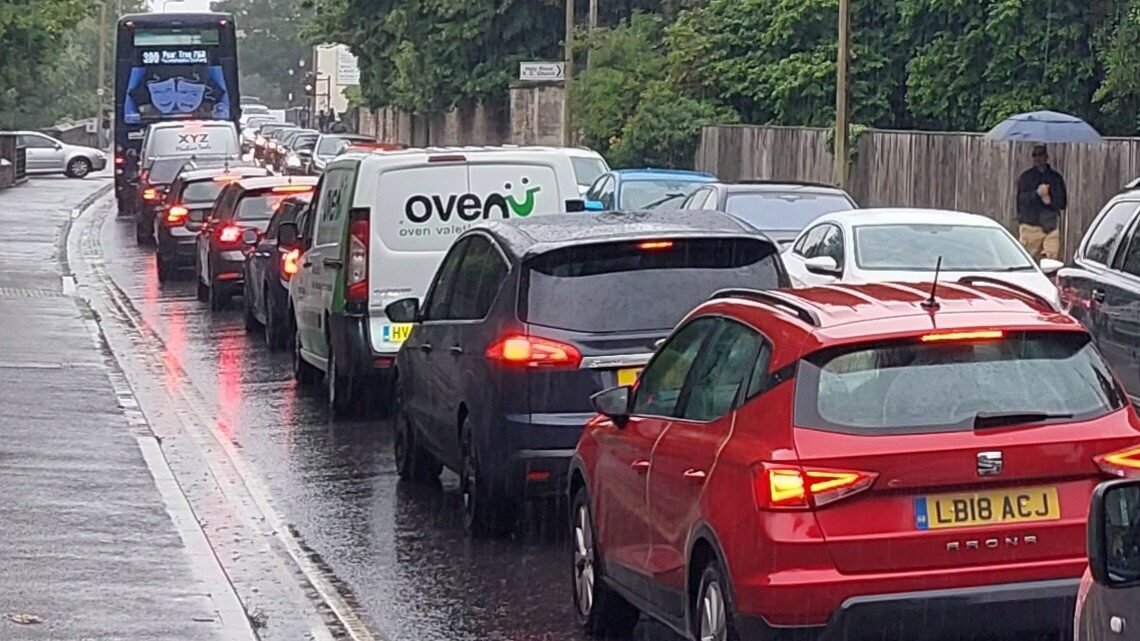
Related articles
